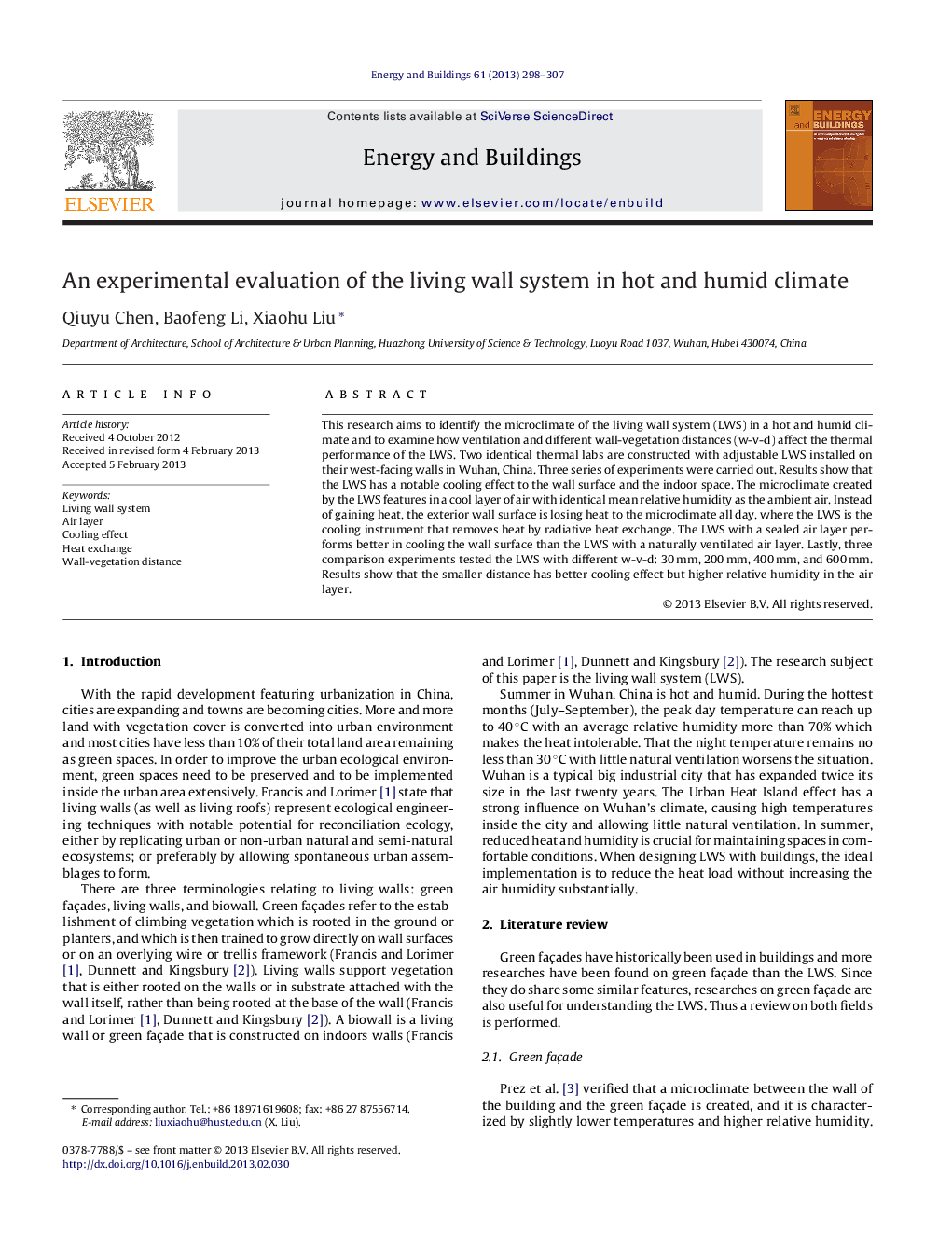| کد مقاله | کد نشریه | سال انتشار | مقاله انگلیسی | نسخه تمام متن |
|---|---|---|---|---|
| 263465 | 504075 | 2013 | 10 صفحه PDF | دانلود رایگان |

This research aims to identify the microclimate of the living wall system (LWS) in a hot and humid climate and to examine how ventilation and different wall-vegetation distances (w-v-d) affect the thermal performance of the LWS. Two identical thermal labs are constructed with adjustable LWS installed on their west-facing walls in Wuhan, China. Three series of experiments were carried out. Results show that the LWS has a notable cooling effect to the wall surface and the indoor space. The microclimate created by the LWS features in a cool layer of air with identical mean relative humidity as the ambient air. Instead of gaining heat, the exterior wall surface is losing heat to the microclimate all day, where the LWS is the cooling instrument that removes heat by radiative heat exchange. The LWS with a sealed air layer performs better in cooling the wall surface than the LWS with a naturally ventilated air layer. Lastly, three comparison experiments tested the LWS with different w-v-d: 30 mm, 200 mm, 400 mm, and 600 mm. Results show that the smaller distance has better cooling effect but higher relative humidity in the air layer.
► The LWS has a notable cooling effect on the wall.
► The exterior wall surface losses heat to the microclimate.
► The LWS is the cooling instrument and the air layer is the heat source of the microclimate.
► The LWS does not increase the humidity of the air layer nor bring more humidity to the indoor space.
► The LWS with a sealed air layer or a smaller w-v-d performs better in its cooling ability, but is more humid in the air layer.
Journal: Energy and Buildings - Volume 61, June 2013, Pages 298–307